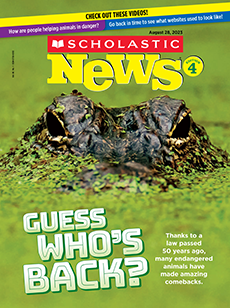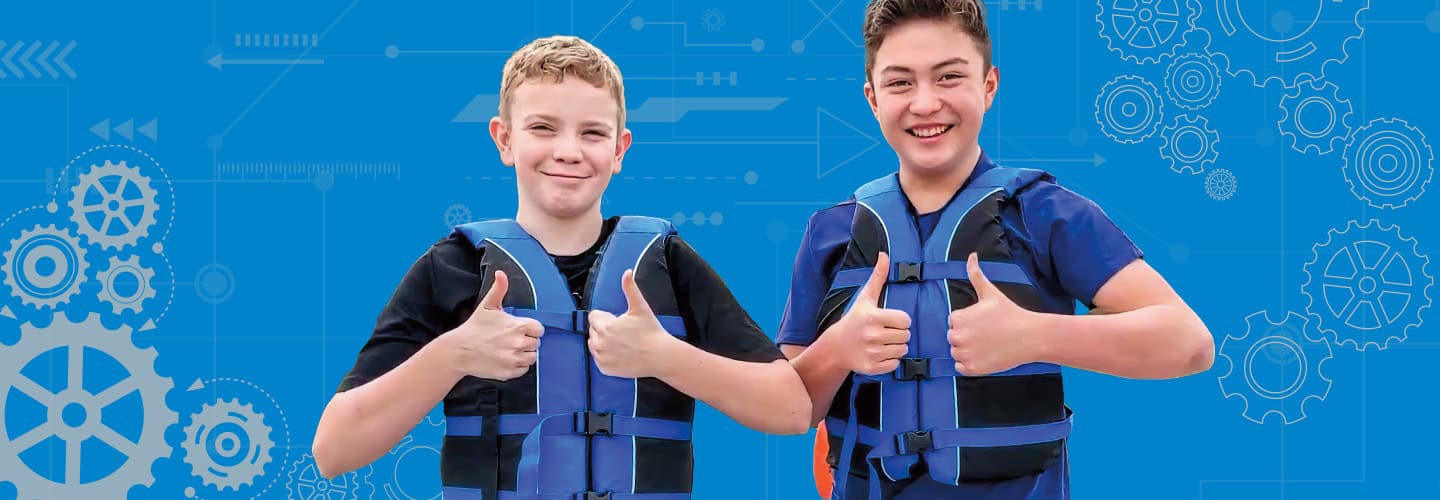All kid inventor photos courtesy of families
Liam (front) and Fraser test out a pouch that holds the chemicals in a LifeHeat vest.
Vancouver, Canada
THE PROBLEM: Two years ago, when Liam was in sixth grade, he fell into the ocean during a sailing lesson. Luckily, he was wearing a life jacket that kept him safe. But the water was super cold! Liam and his pal Fraser wanted to find a way to keep people in water emergencies warm.
THEIR SOLUTION: They created LifeHeat, a life jacket that warms up. For two years, they experimented with different levels of chemicals. Last year, the boys thought they had a working vest. But when they jumped into the ocean to test it, they overheated. “It was a good sign that it worked,” Fraser says. “But it worked too well!” They improved their prototype and were named 2022 Innovators of the Year by the Science Fair Foundation of British Columbia. They hope to start selling LifeHeat soon.

